From 1953 to 1973, Glenn Blough and Jeanne Bendick collaborated on 14 delightful nature books for children. Blough, an educator and leader in children’s science education, wrote these informative, but also delightful science books for young readers so that children would become more curious about the natural world and feel more connected to it. Jeanne Bendick, a famous author, illustrator, and artist illustrated these books, taking the engaging content and bringing it to life with appealing and easy to comprehend pictures that instruct as much as they entertain. We are thrilled that Purple House Press is reprinting some of these books and bringing them to life for a new generation of budding naturalists in their new Nature Study Library series.
“You would probably say that the meadow is beautiful. If the animals that live there could talk, they might say, ‘This is a fine place for us to live.’ A scientist who knows many things about animals would call the meadow a good environment for the animals that live there. That means that the animals have a good place for making homes, for taking care of their families, for finding their food, and for all of the other things they do” (p.4).
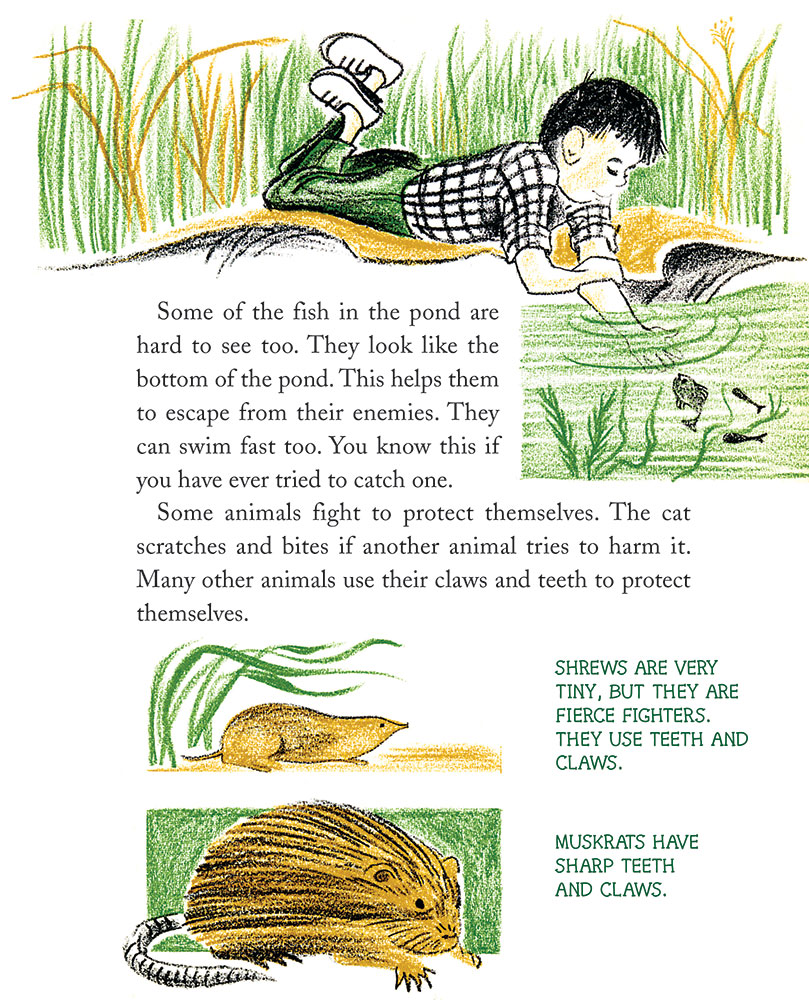
Who Lives In This Meadow: A Story of Animal Life was reprinted by Purple House Press in 2021. This charming story takes the reader into a common meadow and gives them the chance to look around. Then, Blough breaks the story down section by section, giving the reader the opportunity to become familiar with the particular animals of their specific habitat.
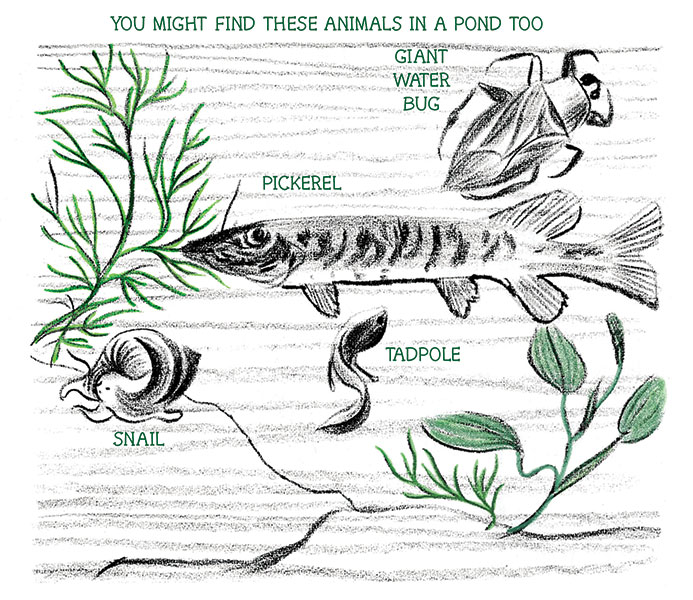
- Living Under the Water
- Living On the Water
- Living Under the Ground
- Flying Through the Air
Then, after we have understood the various possible habitats in the meadow, next Blough takes us into how these animals hunt and eat:
- The Red-Headed Woodpecker
- The Kingfisher
- The Great Blue Heron
- The Bat
- The Cat and Rabbit
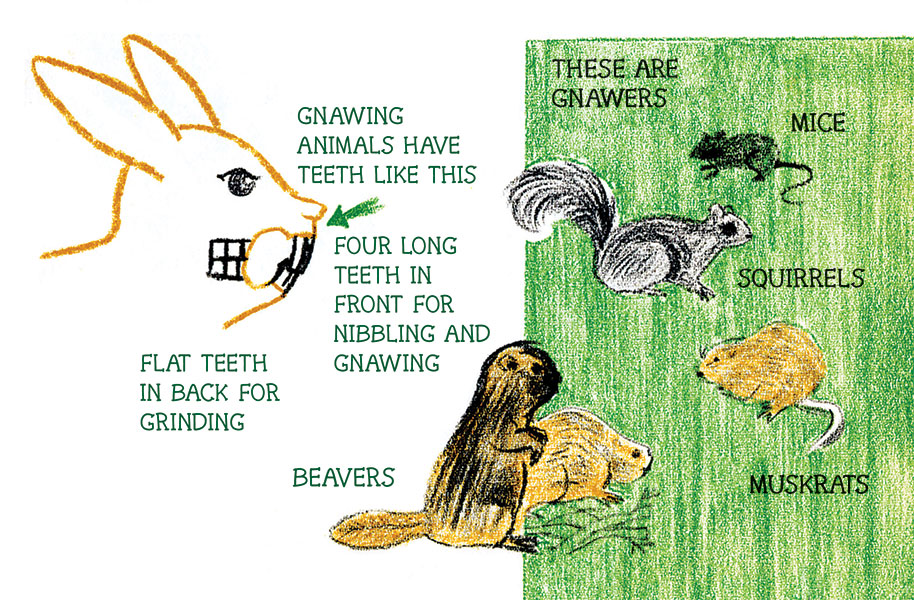
Naturally, these hunting and eating practices mean that some of the animals are also being hunted or eaten.
“Sometimes when the fish in the water is looking for an insect to eat, the kingfisher is looking for the fish. When the crayfish is looking for some fish eggs to eat, the great blue heron is looking for the crayfish. While the cat is pussyfooting over the meadow looking for a wild mouse, the hawk may be flying overhead looking for them” (p. 32).
In the pages that follow, Blough beautifully explains the various defense mechanisms that various prey possess. “If you have ever looked at a rabbit’s hind legs you know they are built especially for jumping and running fast.” His explanations are factual, but they also encourage the reader to have reasonable hope for the animals they may admire. Here in particular, Bendick’s illustrations shine. They are simple enough to illustrate the principle, but friendly enough to fire a child’s imagination.
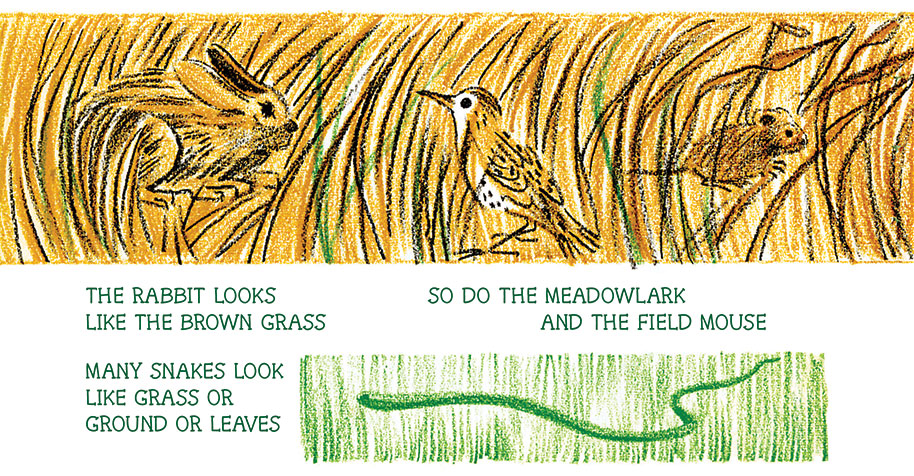
Nearly at the end of the story, Blough explains the interdependence of bumblebees and clover and mice:
“Now you might not think that bumblebees have anything to do with mice that live in the meadow. But they do, for if there were no mice in the meadow there probably wouldn’t be very many bumblebees, and if there were only a few bumblebees there wouldn’t be much clover. Now why do you suppose this can be? Let’s see.”
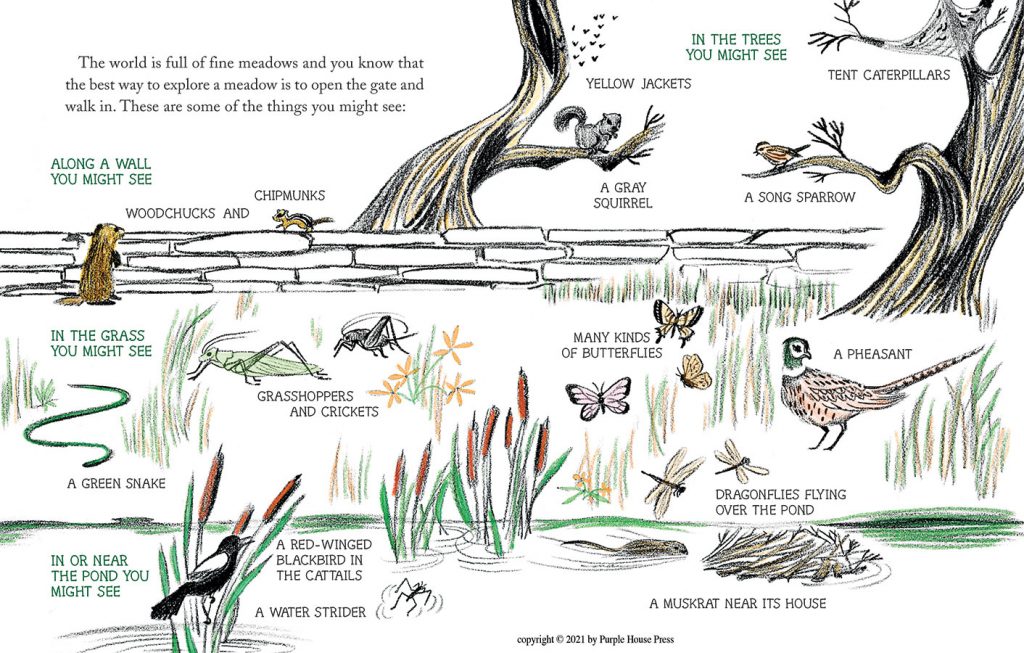
Finally, Blough and Bendick treat us to an invitation to go exploring and see all of these things for ourselves.
“The world is full of fine meadows and you know that the best way to explore a meadow is to open the gate and walk in… Remember to listen for sounds. Look into the water. Watch the birds and other animals and you will see that they are all adapted to their environment. And while you are walking along you may scare up a rabbit. Who knows?”
You can purchase this book directly from the publisher here or from Amazon here. You can learn more about this book and the Glenn Bough and Jeanne Bendick Nature Book series at Biblioguides, here.